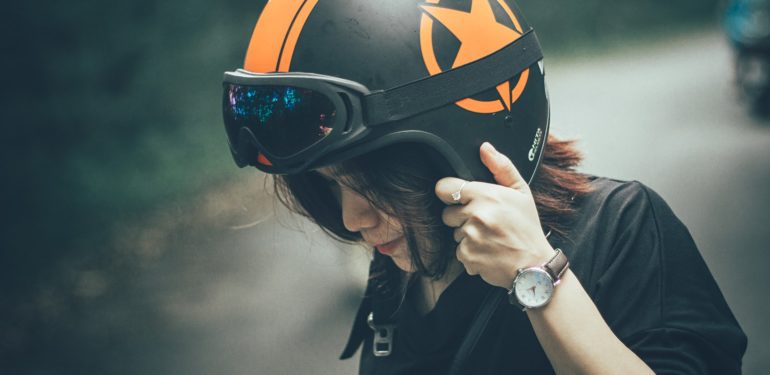If you’ve been riding a motorcycle for long enough, you know that motorcycle helmets save lives. And while you have a choice as to whether to wear one or not in some places, everyone knows someone who’s been in a motorcycle accident where a helmet prevented death or significant bodily injury.
Photo by MIXU
Motorcycle Crash Statistics (Florida, USA)
The state of Florida averages over 9,000 reported motorcycle crashes per year, with about 5 percent of those being fatal. Statistically, if you’re not wearing a helmet, you’re twice as likely to die in a crash. In 2018, 243 of the riders who died in motorcycle crashes were wearing their helmets, and 235 weren’t. The number of riders who were wearing DOT-compliant helmets at the time of the collision was double that of those who were not. About 10% of those who weren’t wearing helmets died in crashes, as opposed to 5% who were wearing their helmets. While neither statistic looks great in comparison to car or truck accidents, individuals wearing helmets faired much better. The percentages are similar for non-fatal injuries.
Motorcycle Helmet Laws
Each state and countries have their motorcycle helmet laws, but most states either require a helmet or require an insurance rider if you’re not going to wear one. In Florida, for example, if you’re over the age of 21, you can choose to operate a motorcycle without a helmet. You must have a $10,000 insurance policy that does not exclude motorcycle accidents. The prices for this insurance coverage varies with age, region, and personal driving record. If you do not have this insurance coverage and you choose to ride your motorcycle without a helmet, you can be ticketed by the police, and they can tow your bike if you’re unable to produce a helmet. Additionally, if you are in an accident, your regular policy may use your non-compliance to avoid paying your settlement.
Motorcycle Helmet Standards
Motorcycle helmet standards are established by the NHTSA, and most states follow their guidelines. Here are the standards that the NHTSA has established:
- Thick liner
- A Snell or ANSI (American National Standards Institute) sticker
- Weight of the helmet (typically a pound or more)
- Design of the helmet – typically a helmet that covers the entire head with face shield, chin strap, and lack of protrusions from the helmet. (“eggshell” helmets are considered non-compliant)
If you have any doubt, look for the DOT sticker. Manufacturers who make DOT-compliant helmets are usually proud to display the certification sticker, but you can also check the manufacturer’s website.
What to do if You’re in a Motorcycle Crash
Whether you’re wearing a helmet or not, a motorcycle crash is likely to lead to injuries. Here are the steps you should immediately take if you’re in a crash:
-
- Move to a place of safety, like the side of the road. If you have to, abandon your motorcycle.
- Contact emergency services. Wait on the scene for the police and rescue workers to arrive.
- Take pictures or videos of the crash. Include images of your motorcycle, your helmet, damage to other vehicles, and the condition of the roadway.
- Ask witnesses to stay on the scene. Or get their name and contact information before they leave.
Contact a motorcycle accident lawyer. Insurance companies often try to lowball accident claims, especially where injuries are involved. An experienced personal injury lawyer who handles motorcycle accidents can help you get the compensation you deserve.


